INTRODUCTION
Normally for my Los Angeles and Orange County neighborhood blogs, I spend a day (two in the case of Highland Park) exploring and seeing as much as I can and then write about it. For El Sereno, however, I had two whole weeks to explore.
I was house-sitting for a couple, staying in their 1959 mid-century home and taking care of a dog and two cats. Before this excursion I was fairly unfamiliar with El Sereno, having once visited the couple I was house-sitting for, twice visited musician Johann Bogeli (Moving Units), passed through on my bike, eaten at King Torta a few times, and just once purposelessly peregrinating (during which time I came across the Mazatlan).
The first night I spent in El Sereno, one of my hosts and I attended a mezcal party in Eagle Rock. Afterward, joined by the other host, we all relaxed in their yard, absorbing the sounds of banda music and partying taking place nearby.
After my hosts embarked on their road trip I would almost always be accompanied in my rambles by their trusty dog, Dooley. I’m not sure if people were especially friendly because I was walking a dog and not just a suspicious guy walking around taking pictures or if people in El Sereno are just generally amongst the city’s most friendly. Whatever the reason, the average day involved so many exchanges of “good morning,” “buenos dias” and hand-waves with complete strangers (and one unintelligible conversation between Dooley and a woman that seemed to have something to do with her ankle monitor and maybe a lighter). As a result, El Sereno has for me deposed Compton as the friendliest community to strangers. (For those wondering, Laurel Canyon and Cambodia Town seemed the coldest).
Most days started about an hour and a half before dawn, when the many resident roosters begin mercilessly screeching “qui-qui-ri-qui” (most of the roosters in El Sereno speak Spanish) for the next three or four hours. This in turn set off the howls and barks of the even more numerous dogs, as does walking anywhere. In fact, the ratio of terrifying dogs to people was so high in the 1980s that postal workers staged protests in El Sereno.
Walking around the neighborhood, especially with a dog, is akin to conducting a cacophonous canine concerto. The main downside is that El Sereno has more dog poop per square foot than anywhere I’ve explored thus far. Sadly, El Sereno is also home to a shocking amount of litter and dumping. However, in two weeks I never saw a resident so much as spit out gum or flick a cigarette butt. In fact, I only saw people picking up, sweeping, and cleaning up trash. I also never saw a street sweeper. I got the sense, ultimately (although some people’s yards looked like refugee camps) that people in El Sereno aren’t more generally prone to litter, rather that the city largley ignores this, the easternmost neighborhood in the city. Contact Our Town El Sereno if you want to get in on a community clean-up – it counts toward community service hours too if you need those.
EL SERENO’S LOCATION
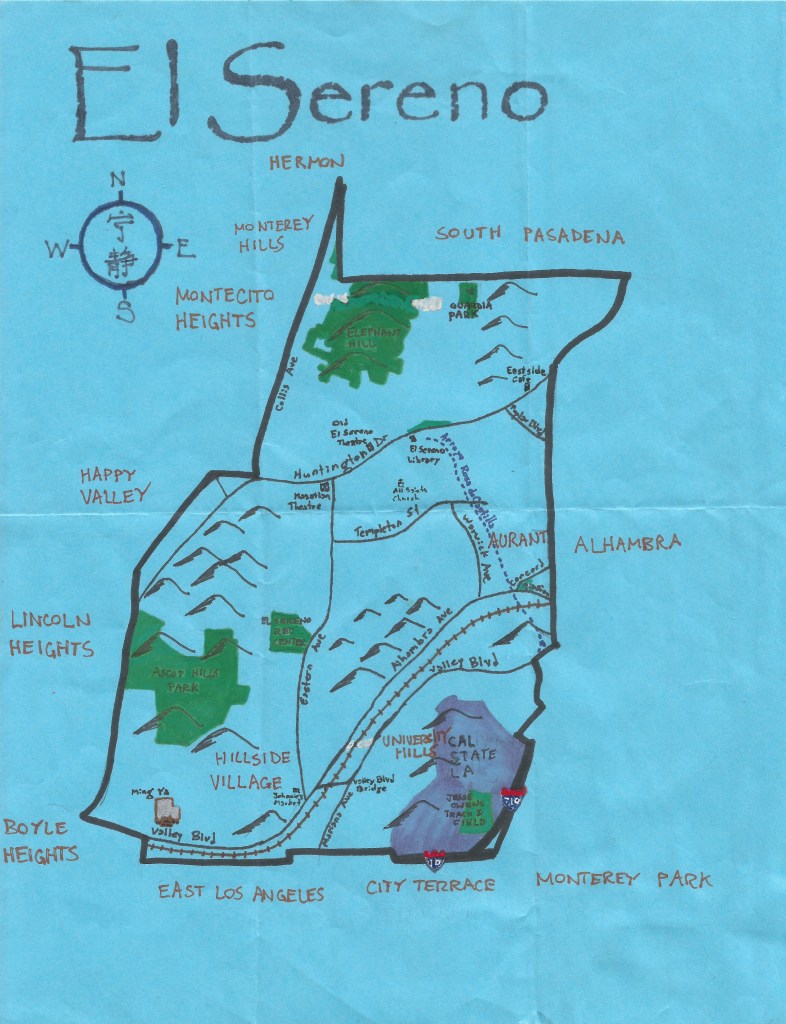
As I mentioned, El Sereno is the easternmost neighborhood on Los Angeles’s Eastside. It includes within its borders the semi-autonomous neighborhoods of Hillside Village and University Hills. Its neighbors are South Pasadena to the north; Alhambra to the east; Monterey Park to the southeast; City Terrace and East Los Angeles to the south; Boyle Heights to the southwest; Lincoln Heights, Happy Valley, Montecito Heights, and Rose Hill to the west; and Hermon and Monterey Hills to the northeast.

EL SERENO’S PAST
Before I came to El Sereno, I read many comments online from mostly former residents who fondly recalled the post-World War II era through the ‘60s, as a golden time of innocence when ice cream, milk, liquor, and bread were delivered and children ran around without fear of danger. Also, it seems like hot dog stands were incredibly important to this generation. The end of most of these “good ol’ days” narratives seems to coincide with the white flight and the population becoming majority Latino in the 1950s and (more understandably) the rise in gang activity in the 1970s. In the face of demographic change, many beloved institutions predictably closed and new ones took their place. I’m not above feeling the sadness that comes with change – especially when involving childhood memories – but I would guess that things have improved somewhat since the end of the “bad ol’ days” (the early 1990s) and some of that energy spent whining could perhaps be channeled into helping improve the neighborhood of the present.
EARLY HISTORY
The first humans in the Los Angeles Basin were the Chumash, whose ancestors arrived in the region at least 13,000 years ago. Roughly 3,500 years ago, the Tongva migrated to what’s now Los Angeles from the Sonoran Desert to the east.One of the earliest known settlements in the area was the Tongva village of Otsungna, which is said to translate to “Place of Roses,” and was located on or near the banks of the Arroyo Rosa de Castilla. The stream emerged as a spring near the location of Guardia and Farnworth today. One of their trails was later turned into Mission Road, Alhambra Road, and Valley Boulevard.
After the Spanish Conquest, the lands that now include El Sereno were claimed by the Mission San Gabriel Arcángel, first established in the Whittier Narrows and finally relocated to what’s now the City of San Gabriel. One of the first 36 California adobes was built in 1776 by Franciscan missionaries on the present-day site of California State University, Los Angeles. Ten years after Mexico gained independence from Spain, 160 acres of land around the adobe were granted to Juan Ballesteros, who named it “Rancho Rosa Castilla.”
After the US defeated Mexico in the Mexican-American War and took over the land, Anaclet Lestrade, a priest at Our Lady of the Angels Church, took charge of the rancho. In 1852, Basque-by-way-of-Argentina farmer, Jean-Baptiese Batz, and his wife, Catalina Hegui Batz, acquired the ranch and raised sheep and crops there until the male Batz’s death in 1859. In 1876, Catalina Batz acquired the title to the land and purchased surrounding areas. After her death in 1882, the land was inherited by six of the eight Batz children. The adobe was destroyed by fire in 1908.
BAIRDSTOWN
One of the first communities to arise in the area around Rancho Rosa Castilla was Bairdstown, in 1905. It was founded along a Pacific Electric Railway line that ran along what’s now Huntington Drive. A number of Crafstman homes were constructed for the working class neighborhood, largely between 1910 and ’13. Other unincorporated communities that arose in the early 20th century include Farmdale, Rose Hill, and Sierra Park.
The Bairdstown School, later Farmdale Public School, was the first school in the area and today is located on the campus of El Sereno Middle School.
BEGINNINGS OF EL SERENO
In 1915, Bairdstown and the neighboring communities were annexed by Los Angeles and renamed “El Sereno,” literally “the serene one” but colloquially understood to be a term for a night watchman.
EL SERENO’S OLD CHURCHES
Several of the neighborhoods earliest churches were constructed shortly after El Sereno’s annexation. All Saints Catholic Church opened in 1921. The buildings that house El Sereno Foursquare Church and El Sereno Jehovah’s Witness were built in 1923 and ’24 respectively.
EL SERENO CINEMA
El Sereno’s second movie theater, the J.T. Payne-designed The Cameo, opened in August 1924 as a 750 seat, single-screen, silent film theater with a pool parlor above it, known as The El Sereno Club. In the 1930s it was acquired by Edwards Cinema. (There seems to have been an earlier theater, built somewhere on Huntington in 1922 and designed by A. Godfrey Bailey (who designed Downtown‘s Cameo Theatre, Santa Ana‘s Broadway Theatre, and San Fernando‘s San Fernando Theatre)). In the 1970s, it was re-named “El Cameo,” reflecting its switch in focus to Spanish-language films. Now it’s a 99c Discount Store.
NEW ASCOT SPEEDWAY
On 24 January, 1924, the New Ascot Speedway opened in southwest El Sereno/Hillside Village at the foot of Ascot Hills. The one kilometer track was utilized by midget cars. It struggled to attract sufficient crowds until 1928, when the Glendale American Legion Post stepped in and convinced the AAA to get involved. From 1924 to 1936, some 24 drivers lost their lives which is said to have influenced the Glendale American Legion’s departure. Rebranded the Ascot Motor Speedway, it continued for a short time until 25 January 1936, when Al Gordon and Spider Matlock died in an accident. The track was closed and eight months later the grandstand burned to the ground.
HARRIMAN AVENUE
In the 1930s, there was another housing boom. Before World War II the population was racially diverse, with one of the Eastside’s few black enclaves arising along Harriman Avenue. My research suggests that there are no longer any vestiges of the community as the cabins were long ago bulldozed.
SOTO STREET MISSION VIADUCT
The Soto Street Mission Viaduct was constructed in 1936 for the Pasadena Short Line of the Pasadena Railway. In the 1960s, the tracks were removed and the Huntington Drive was redesigned for cars.
The most famous car associated with the bridge is a 1958 Plymouth Fury named Christine, which in the 1983 John Carpenter film of that name, saw the car hanging out under the bridge before killing Moochie by crushing him against a loading dock.
WORLD WAR II AND THE ITALIAN-AMERICAN INFLUX
During World War II, many established Italian American families moved to newer, outlying suburbs. In 1938, Little Italy was mostly erased and reopened as the city’s new Chinatown. A large portion of the Italian American population of that neighborhood and neighboring Lincoln Heights began to expand (along with smaller but significant numbers of German Americans and Mexican Americans) into Alhambra, Echo Park, Elysian Valley, Rosemead, San Gabriel, Temple City, and El Sereno — among others.
THE MAZATLAN
The old Mazatlan Theatre opened on 20 November 1940 as a 754 single-screen, art deco movie theater called the El Sereno Theatre. It later became an American Legion hall and is currently the construction office of De Anda Construction Co., who purchased the property in 1982. It currently faces foreclosure and possible demolition.
HILLSIDE VILLAGE
It was on a hot day, during a long walk, that Dooley and I stumbled into a neighborhood quite distinct from that of the one surrounding our home base. Instead of aggressive dogs guarding homes, there were lawn ornaments.
Aside from a few xeriscaped landscapes, most of the (relatively large) yards were thirsty, some were being tended to by day laborers rather than the homes’ owners, and many were decorated with old-people-favored flowers like roses and geraniums. Most shrubs were ridiculously trimmed with flat-tops so that they looked like big, green marshmallows in the manner that was curiously fashionable over half a century ago. There were also copious American flags swaying in the soft breeze, adding to simultaneously charming and creepy 1940s/’50s vibe.
It turned out that we’d entered Hillside Village, a neighborhood almost entirely settled between 1940 and 1942 on the former site of the Ascot raceway. Although the vibe is both distinct and there are Los Anglees neighborhood signs (installed around 2007), I still get the sense that most folks outside the area think of Hillside Village as being part of El Sereno, if perhaps a more uppity part.
Meanwhile, many residents of the Hillside Village, which is sometimes ludicrously referred to as “The Beverly Hills of El Sereno,” have long attempted to distance themselves from their neighbors. (A sign has recently been installed at Rowan and Valley and I guess there are others). A “Hillside Village” identity began to emerge at least as soon as it was developed and over the decades that followed, some fought to distinguish themselves from the El Sereno neighborhood into which they’d moved. The efforts were further pushed by the Hillside Village Homeowners Association. It seemingly remains a contentious issue more than 50 years later. To read more about Hillside Village, click here.
JOHNNIE’S MARKET
After leaving Hillside Village, Dooley and I headed east up Valley. We stopped at Johnnie’s Market, a locally famous market/deli to get some water for Dooley, who was starting to express disinterest in continuing our constitution. It seems to have been established in the 1950s by one Johnnie Costentino. For many years now (38, the man behind the counter guessed), it’s been operated by Kim and Winnie Kong.
CALIFORNIA STATE UNIVERSITY, LOS ANGELES & UNIVERSITY HILLS
In the 1955, the hills in El Sereno’s southeast began to be flattened and the Arroyo Rosa de Castilla was partially covered and diverted into culverts. By the mid-1960s, almost all of the arroyo was covered. Today, there is a small stretch of the channelized stream that remains uncovered, near the southbound 710 Freeway. I made several attempts to glimpse it but was unable to find a way around the fences.
Dooley and I did explore Cal State LA’s campus, however. The school was established in 1947 as the Los Angeles State College. It occupied several locations before moving to El Sereno’s University Hills.
It’s one of El Sereno’s and the city’s primary cultural hubs as the home to the Luckman Fine Arts Complex, which includes. The complex opened in 1994 and includes the Luckman Theatre, the Luckman Intimate Theatre, the Gallery, and the Street of the Arts, which has a statue of Confucius (孔夫子) that was donated by the government of Taiwan. In addition to being home of the Luckman Jazz-Orchestra, it’s also hosted Barbara Morrison, CocoRosie, the Idan Raichel Project, India.Arie, Jane Birkin, Lila Downs, Tinariwen, and many more. To read more about University Hills, click here.
GANGS OF EL SERENO*
The 1970s saw a distinct rise in gang activity. In El Sereno, the predominant gang that arose was El Sereno Rifa – Locke Street. Other gangs of the era included Ballard Street, Cyril Street Locos, and Gambier Locos. Presumably, this is when the ugly bars went up on the windows, and wrought iron and chain link fences went up in people’s yards.
Another gang briefly prevalent in El Sereno was the Mongols Motorcycle Club. After being established in Montebello in 1969, they opened their second chapter in El Sereno shortly after. Their preferred El Sereno hangout was a reportedly a no-longer-extant bar called the Green Frog, near Johnnie’s. I guess they moved on although I did see “Mongols MC” written in sidewalk concrete when I walked over into Alhambra.
Many gangs seem to have come and gone (e.g. The Ditch, Kaw13, Hillside, and Lowell Street Locos) although El Sereno remains. Today they’re joined by Eastside 18th Street, Guardia Street, The Highlands, Ithaca Street, and Metro 13 who seemingly write their gang tags on any surface, testament to countless amounts of time, energy, and effort spent ironically representing their barrio by despoiling it.
As an aside: as I often say, the presence of gangs should not frighten one from enjoying a community, including El Sereno. While all unnecessary violence is lamentable, most crimes that take place in the neighborhood are non-violent property crimes. And at the time of writing, El Sereno’s property crime rate is 180 out of 209 reporting communities, just below that of La Crescenta-Montrose and just above that of Topanga – two communities almost never categorized as crime-plagued by the biased local media.
There’s definitely a move to remove fences and bars and it’s amazing how much less a place can feel like a residential prison as a result.
*Primary Source on gang history: Brown Kingdom
ELEPHANT HILL


As El Sereno began to be increasingly patrolled by LAPD helicopters, officers began calling the undeveloped hills (known locally as “The Heavens”) “Elephant Hill,” for its purported pachyderm appearance. I have looked at the hills on Google Earth and I don’t see it but that’s neither here nor there. It’s not exactly unspoiled. Long ago the Spanish grazed it, depriving it of its native plants, and subsequently replanted it with mustard. It’s also crisscrossed not with trails but with unpaved avenues and streets — some more “paper” than actual. Nonetheless, at over 100 acres it’s a cherished area and, judging by my archeological findings, a very popular place to drink Heineken or Modelo Especial and then smash the empties. Locals began their efforts to save it in 1984 and, as a result, the Santa Monica Mountains Conservancy purchased a small portion of it, at least saving that from tract homes.
LOS ANGELES CHRISTIAN PRESBYTERIAN CHURCH – 나성한인교회
From the outside it’s not a terribly pretty building. Being a megachurch, however, it is certainly imposing. It’s home to the Los Angeles Christian Presbyterian Church (or 나성한인교회), which moved there in 1984. I’m curious about the inside but, let’s face it, I’m not terribly likely to check it out.
HALTING THE 710
Construction of what is today known as the 710 began in the 1930s and was envisioned as a highway designed to connect Long Beach to Pasadena. For decades it moved north, expanding from a highway to an Interstate and displacing many residents and dividing communities along the way. By the 1960s, it terminated at the edge of El Sereno at Valley Boulevard. In the 1990s, a group of activists mobilized to prevent it from progressing through El Sereno. This group included The Mothers of East Los Angeles, the El Sereno Neighborhood Action Committee, the El Sereno Organizing Committee, and the NAACP, who successfully halted planned construction in 1997. Today the fight is joined by El Sereno United as One No 710!
MING YA BUDDHIST TEMPLE – 明月居士林
At the southern edge of El Sereno/Hillside Village is the Ming Ya Buddhist Temple (明月居士林). The building, constructed in 1951, was once the home of the Roscoe Moss Co (which still exists across the street in one of my favorite industrial complexes) and finally the Electronics Division of the Thomas & Betts Corp. before the temple acquired the building in sometime after 1993. Joss sticks burned and a small group of visitors exited with their arms full of something I couldn’t make out as Dooley and I stood at the entrance.
THE EASTSIDE CAFE – ECHOSPACE
Near the end of my stay I chanced upon Echospace, a cultural and educational space founded with the intention of promoting self-reliance, cultural awareness, health, and the arts. It opened around 2009 and offers an alternative to the internationally famous figures that performed at Luckman by hosting community artists. It’s best known progeny is the son jarocho band, Las Cafeteras, who formed there in 2005. Next door is the FUSION Performing Dance Academy.
Behind this compact cultural center is a group of eight, tiny mock Tudor homes, fenced off and with government property signs warning against trespassing or dumping. I couldn’t find anything out about them although the signs weren’t deterring people from dumping in the least.
http://www.indiegogo.com/project/204223/widget
Update: Annette Cruz, a writer for Our Town El Sereno, contacted me and let me know what’s going on with these bungalows. The El Sereno Bungalows Collective, are in the process of raising funds to turn them into a free art and culture space. To do so they need money. To pledge any amount click on this link. They’re owned by Caltrans, who aquired them through eminent domain because they were in the proposed path of the 710 — but have sat abandoned since the 1980s.
EL SERENO BRANCH LIBRARY
The El Sereno Branch Library opened around 2004, after a heated battle that highlighted one of the primary divisions amongst El Sereno’s inhabitants. In one corner there are the advocates of the greater/traditional El Sereno, most of whom were in favor of the library’s ultimate location. In the other corner is LA Neighborhood Council 32, who would like to see the area further carved up into small, micro-neighborhoods like Emery Park, Hillside Village, Rose Hill(s), Sierra Park, and University Hills. As an outsider, I’m not going to weigh in this issue although I think that they’re not as necessarily mutually exclusive as the loudest drum-beaters suggest.
An artist commissioned by the library seems to have attempted to bridge to the side’s with her or his piece that shows an imaginary “red car” with “El Sereno” written on the front and “Monterey Hills,” “Rose Hills” [sic] and “Hillside Village” written on the side.
BARRIO ACTION FAMILY & FAMILY CENTER
Barrio Action Youth and Family Center was established in 1977. Since their foundation, more than 20,000 individuals have sought to make positive changes in their often difficult lives. The new building opened in El Sereno in 2008, giving the center its first permanent home. The large facilities include counselors, a gym, case managers and more.
EL SERENO’S DEMOGRAPHIC CHARACTER TODAY
Today El Sereno is the oldest and wealthiest neighborhood of the Eastside (if one considers Northeast LA to be distinct). 43% of the population is foreign-born, mostly in Mexico and China. The demographic makeup of its residents, as of the 2000 census, is approximately 81% Latino (mostly Mexican), 11% Asian (mostly Chinese), 5% white, and 2% black.
PARKS
El Sereno has numerous open spaces and parks, and there are more under construction. Currently there are well over 200 acres of such space to enjoy.
ASCOT HILLS
One day, whilst walking down Soto, I arrived at the western edge of the 93 acre Ascot Hills Park. Not seeing a trail, I decided to scale the hillside. About two thirds of the way up I started to realize how hot it was and wonder if I’d made the best decision. Nonetheless, Dooley and I trudged onward and upward, through thick, dry growth over the dry, crumbling hillside.
Ascot Hills opened as a park in 2011 after the proposal was first made in 1930! Of course, being a large, undeveloped and hilly area in Los Angeles boasting views of the Channel Islands (on clear days), it was the site of several battles between developers and nature lovers over the decades. For years it was also a victim of budgetary crises and bureaucracy.
At the top of the hill, the sun beat down on us and the dry grasses even though it was still morning. Butterflies and lizards flitted and scurried around us. There were signs of other animals having been present judging from the presence of coyote poop, thousands of California ground squirrel holes, and tags presumably made by humans. We made our way toward a small stream lined by datura and sunflowers. The air was thick with the aroma of sage and mustard as well as various woody, peppery and savory smells that I couldn’t place.
In addition to the aforementioned parks, there’s also the El Sereno Recreation Center, Guardia Park, and the unfinished El Sereno Recreation and Nature Garden, which broke ground in July.
El Sereno Recreation and Nature Center under construction
The park-like median of Huntington Drive
Additionally there’s a long, thin, and apparently unnamed park that is the median for Huntington Drive. Although not really a park, per se, this seems like a good time to shout out the El Sereno Community Garden.
EL SERENO EATERIES
Ever since the buzz generated by Kogi BBQ (founded by Pinoy Mark Manguera), Korean-Mexican fusion cuisine has reached a new level of popularity. However, the history of Coreano-Mexicanos begins in 1905, when the first Koreans moved to Mexico to work on henequen plantations. When I first moved to Los Angeles in 1999, I noticed considerable, natural cross-cultural interaction and influence in the both heavily Korean and Latino Koreatown. When I came across Cha Cha Chili (formerly known as Red Hot Kitchen) I was curious about its history and food. It smelled good but since dogs aren’t usually welcome in restaurants, I’ll come back another time.

Tamale Man seems to be a popular eatery. It’s subtle streamline moderne features give away the 1940s construction of the building. It and El Palenque both feature murals with the iconic Mexican improbably sleeping soundly against a saguaro (see Charles Phillip Jimenez‘s self-published book, The Sleeping Mexican Phenomenon).
Even though it’s no longer there, a place called Jim’s Burgers seems to be so missed by old timers that it warrants a mention. Of the current restaurants, I’m only familiar with (and a fan of) King Torta. A Maya restaurant named Tikal looks like it’s ready to open any day now.
There’s also El Aguila Bakery, Angeles Restaurant, Betty’s Burgers, El Chalateco, La Chapalita, Charlie’s Trio, Donut & Bakery, Garfano’s Pizza, Granny’s Donuts, Hecho en Mexico, Hong Kong Kitchen, La Fortaleza, Mariscos El Kora de Nayarit, El Puerto Escondido, Roong-Fah, Tacos El Paisa, La Tapatia Meat Market, Olympic Donut No 15, Taqueria El Camino Real, El Taquito (formerly the Alamo), El Tazumal, Thai Beam Cuisine, Tony’s Subs & Salads, Troy’s Burgers No 10, and El Vaquero.
NIGHTLIFE IN EL SERENO
[NOTE FROM 2021: I couldn’t find links to the videos originally part of this section]. Above is a short piece from KCET‘s Webstories about the Eastside’s backyard party scene in the late ’70s and early ’80s. Featured is John Guzman of Face to Face. Click on this link to see examples of old flyers. And above is Guzman talking about the influential El Sereno club, The Third World, which later became the Copa. It later served (1983-84) as the third and final location of the infamous Eastside punk club, Vex, closing after someone was stabbed.
Today the nightlife scene in El Sereno seems to be pretty quiet. There are apparently no bars, no clubs, and no live music venues (except for Luckman — and Hecho en Mexico has mariachis on weekends). There tend to be numerous backyard parties on weekends though.
MUSIC OF EL SERENO
The main music venues in El Sereno seem to be Eastside Café and the Luckman Fine Arts Complex. There used to be a club called “The Copacabana (unrelated to the Copa of the disco era, I assume, unless The Skylighters were NOT Billy Wood’s early ’60s band) whose house band was known as The Skylighters. I’m not sure if it’s the same band that recorded “Look-a-here” b/w “Hold On” as Billy Wood & the Sky-lighters in 1962. Anyone know? Apparently there was also a disco called the Great Gatsby back in the day.
Local metal fans may enjoy knowing that Armored Saint was formed in El Sereno in 1982 by South Pasadena High School students Phil Sandoval, Gonzo Sandoval, and David Prichard.
In the 1980s, the Eastside was, along with Hollywood, a center for the city’s major punk scene. Jaime Chavez fronted Malignance (later Rise & Fall) and, as mentioned above, the famed club Vex operated there until 1984, featuring during that time many punk bands including Black Flag, The Crowd, Social Distortion, and presumably many stalwarts of the then-thriving backyard party scene. Fans of shrill math emo might enjoy knowing that Mars Volta apparently filmed an unremarkable video for “Goliath” somewhere in El Sereno, supposedly. El Sereno is also home to rapper Olmeca. Finally, El Sereno was mentioned in Little Village‘s song “The Action.”
EL SERENO IN FILM
In addition to the two former cinemas and the scene in Christine, at least one scene of The Rookie was filmed on Eastern Avenue and in Kill Bill, Vernita Green’s Pasadena home is actually in El Sereno (5500 Atlas Street). Apparently, Street Kings (I film I have no previous knowledge of) was filmed there as well. El Sereno was also the setting and subject of a Law & Order: LA episode, titled “El Sereno.”
EL SERENO ARTS
El Sereno isn’t often promoted as a bustling center of visual arts in Los Angeles so the amount of it came as something of a surprise.
Not all of the graffiti in El Sereno is of the gang or tagger variety (although a staggering amount is). There’s also quite a lot of graffiti that aspires to be art.
There are also numerous murals, including the commercial ones that show what’s sold within a particular shop.
Along the Metrolink tracks and elsewhere there is some more artistic work. (NB: This stretch is a fairly gritty area. Most of the storefronts look abandoned and there are many people living in cars and campers. I happened to espy a someone rubbing his injection site after shooting something that I doubt was insulin.)
Being the Eastside, there is of course at least one Sand One piece. There’s also Peter Q‘s (Peter Quezada?) inscrutable Welcome to Gothic City.
There’s also José Antonio Aguirre‘s A Luminaries Journey, a collection of public art pieces erected near the Valley Boulevard Bridge honoring significant figures in Chicano history.
And although I didn’t check them out, there’s sculpting happening at Barnacle Bros. Sculpture and Custom Fabrication, and Jorge Pardo Sculpture.
LOS ANGELES COUNTY HIGH SCHOOL FOR THE ARTS
Los Angeles County High School for the Arts (aka Arts High aka LACHSA) is a tuition-free, public, visual and performing arts high school founded in 1984. It currently shares a campus with Cal State LA although it looks like they’re getting a new home just north of the University.
SUMMERCAMP
I almost, forgot. There’s an underground artspace known as Summercamp (or Summercamp’s Project Project) that I’ve been to a couple of times. It was founded in 2009 by Fatima Hoang, Elonda Billera Norris, and Janice Gomez. The first show I attended was Immersion Program: somewhere between the dust and the light, back in November, 2009. I believe I went with artist Cindi Kusda. The second time was June 2010, to The Real Show (title pending), when I went to see work by Xu DaRocha (whom I profiled for the blog a month later). Also there were artist Karen Lee and musician Mike Morgan (Antarcticans, Crooked Cowboy & The Freshwater Indians) if memory serves.
As always, this neighborhood blog isn’t meant to be the definitive, all-inclusive written piece on El Sereno and I hope that it will encourage you to explore and share your own memories, thoughts, and additions.
Mural at Anahuacalmecac University Preparatory High School (mural by Arte Toltecayotl aka Joe Galarza)
Support Eric Brightwell on Patreon


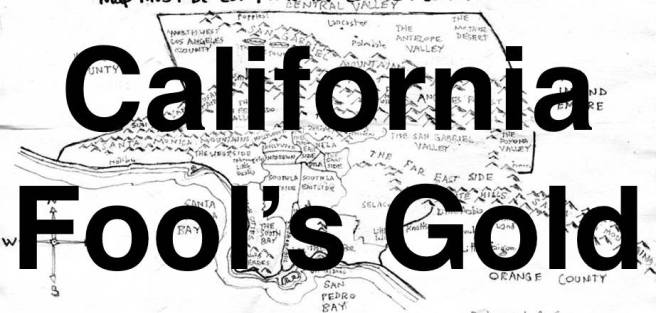






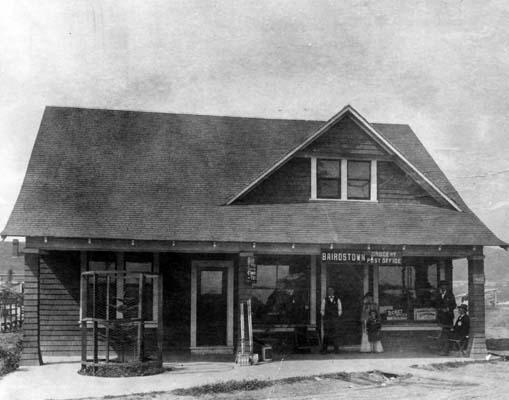





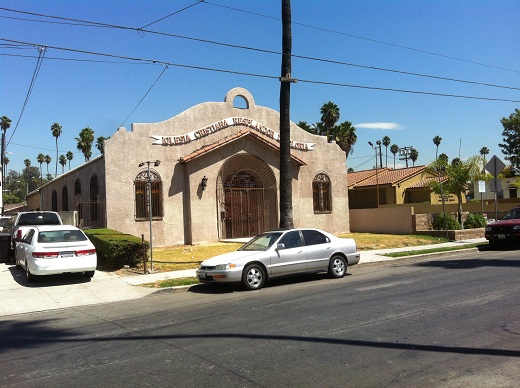
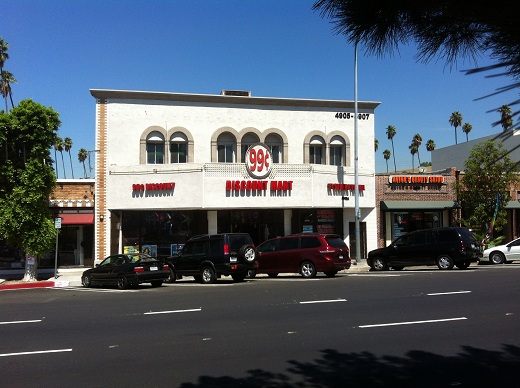

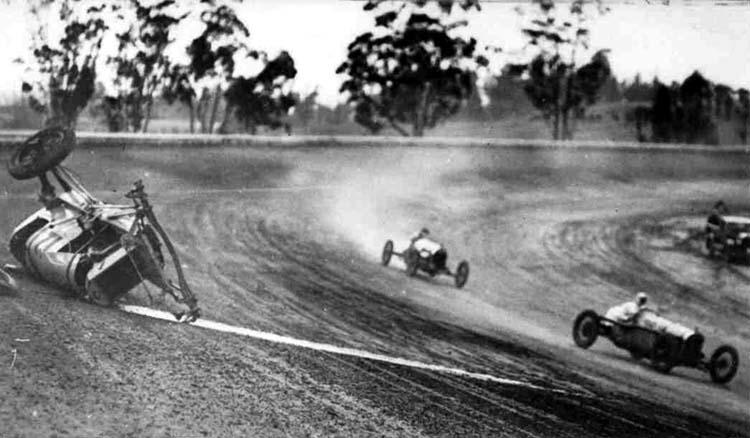





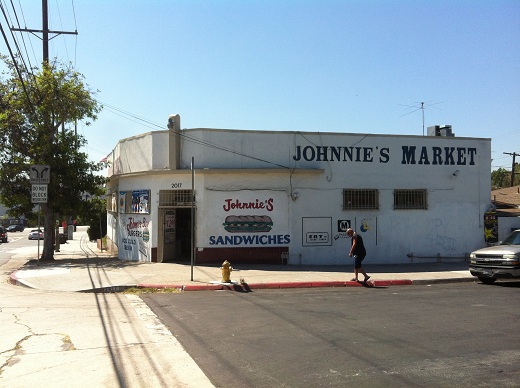

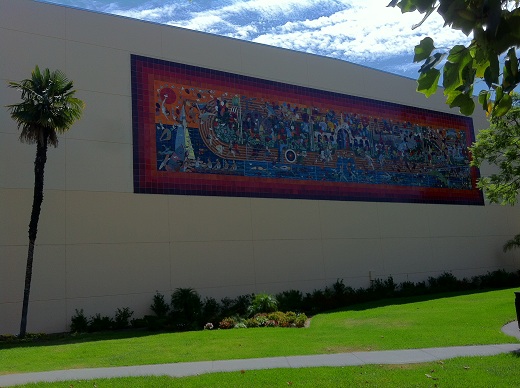
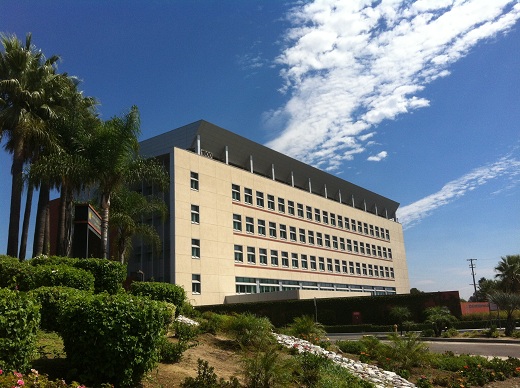
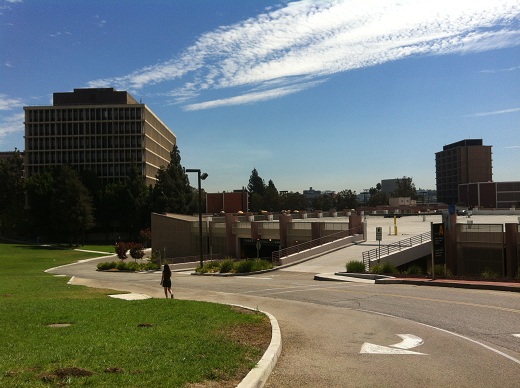

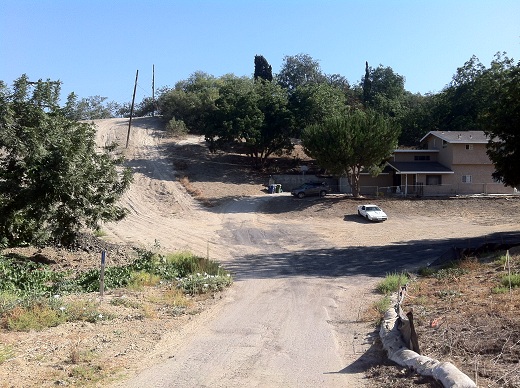
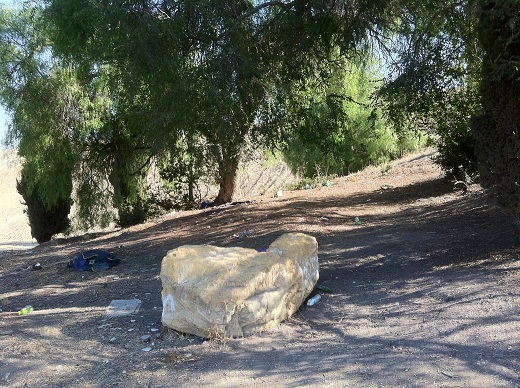
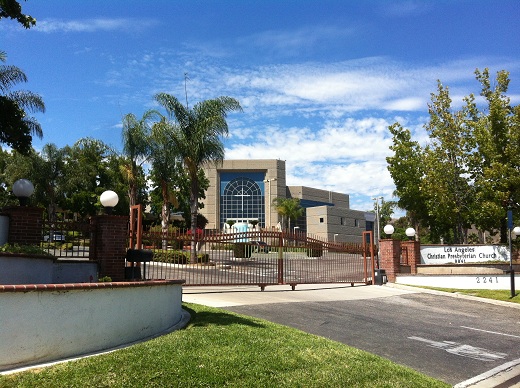







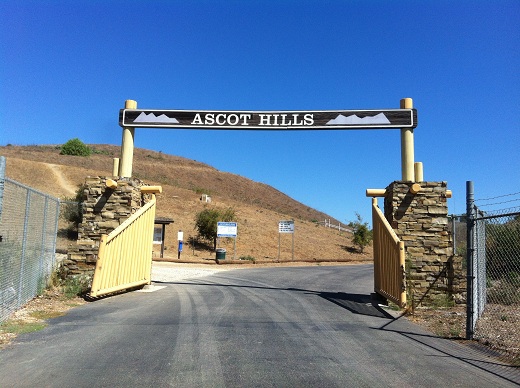
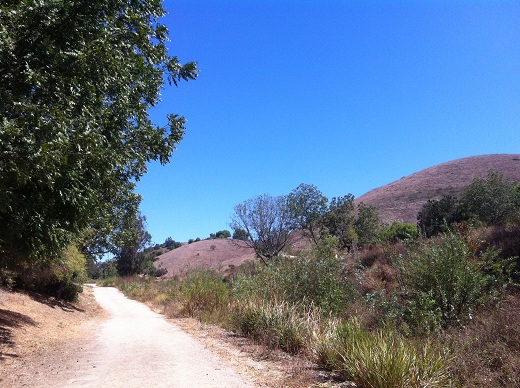

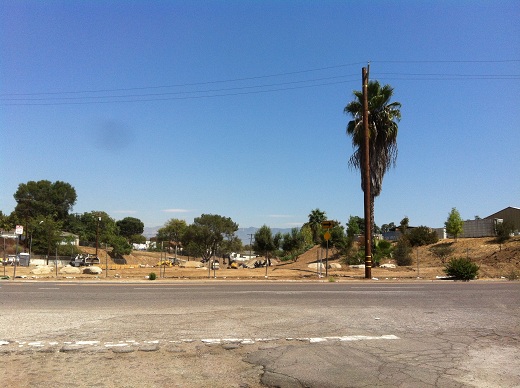
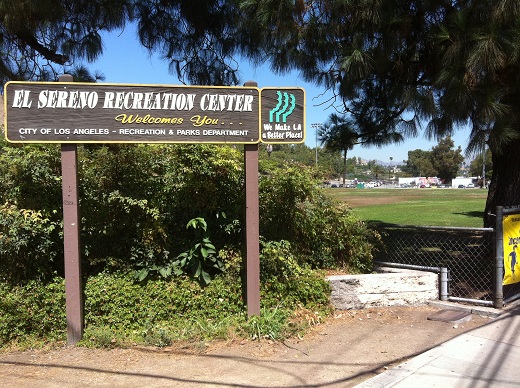
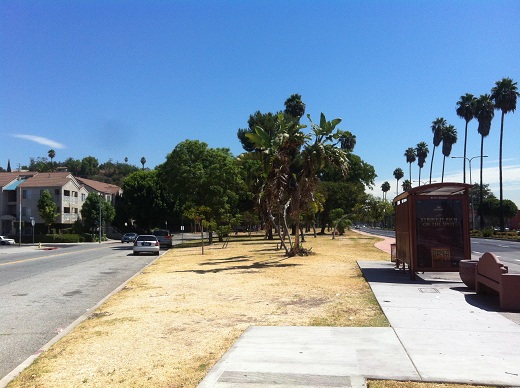

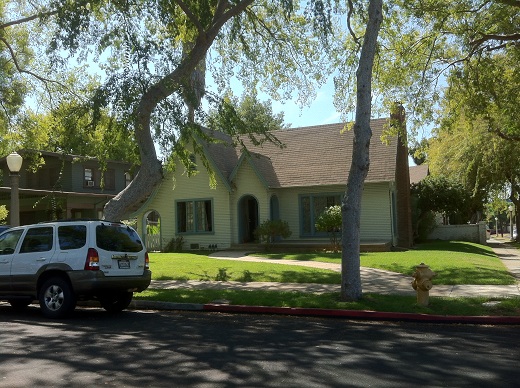
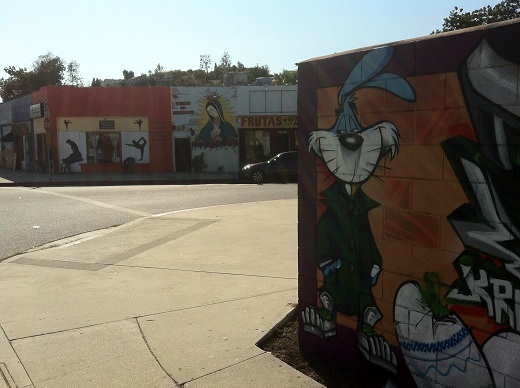

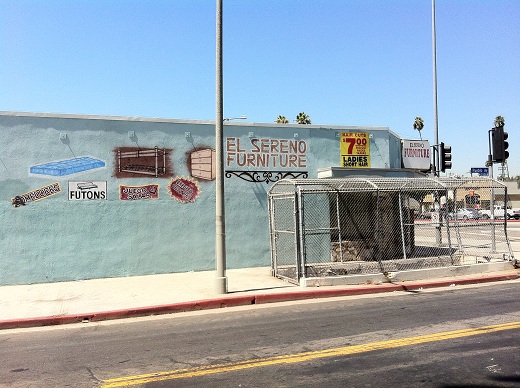

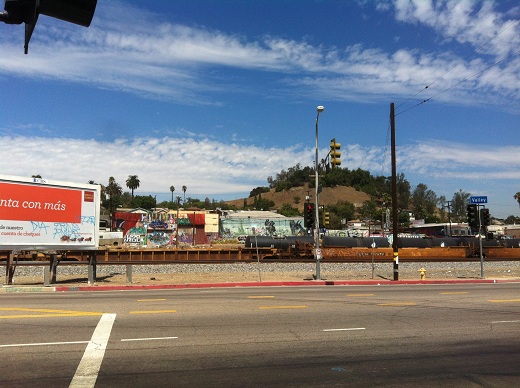
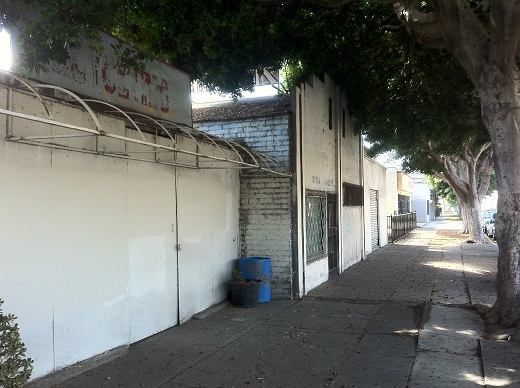



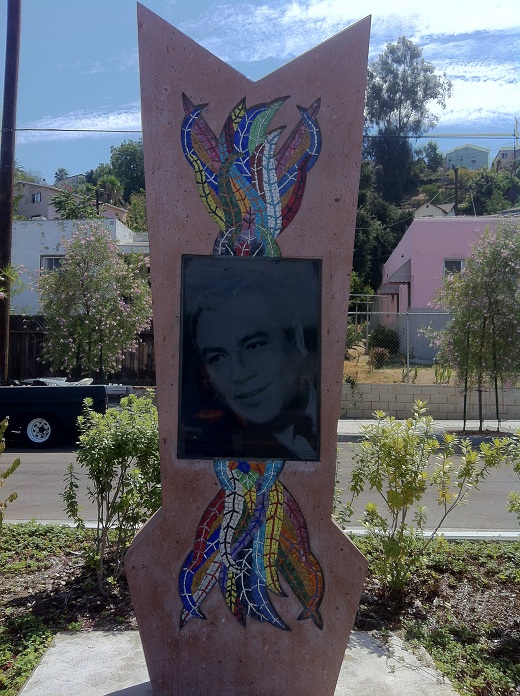
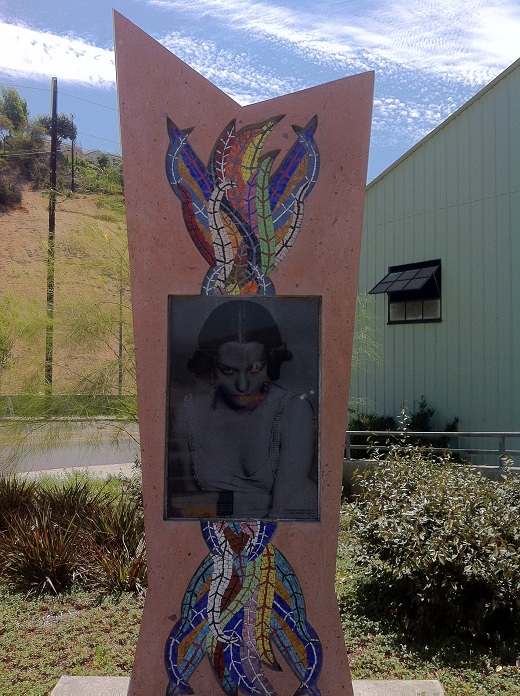
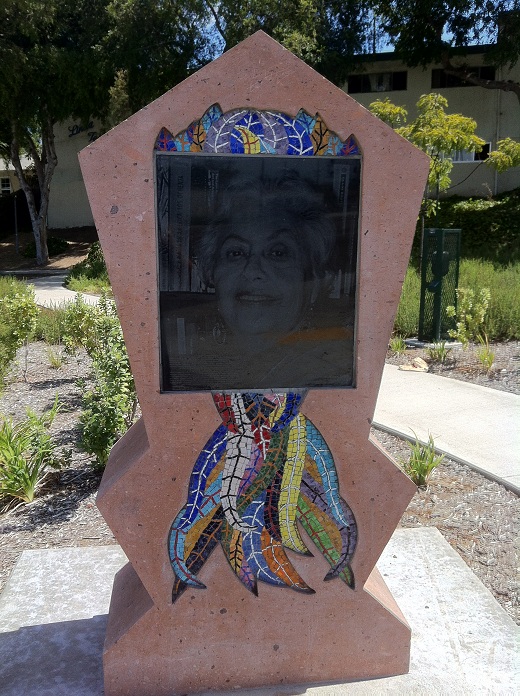
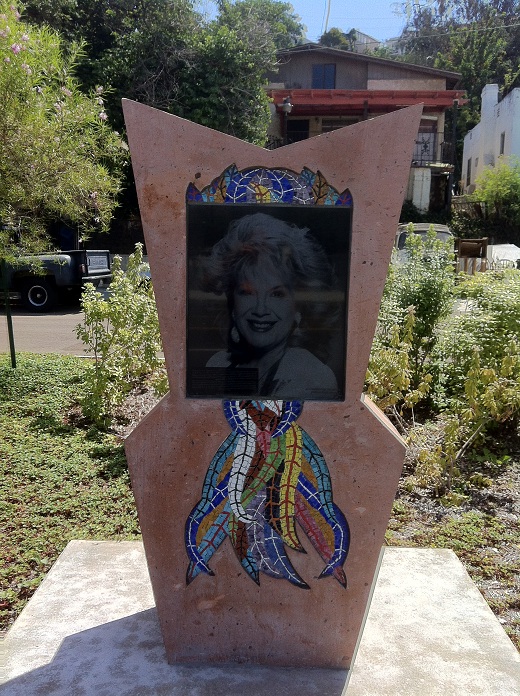
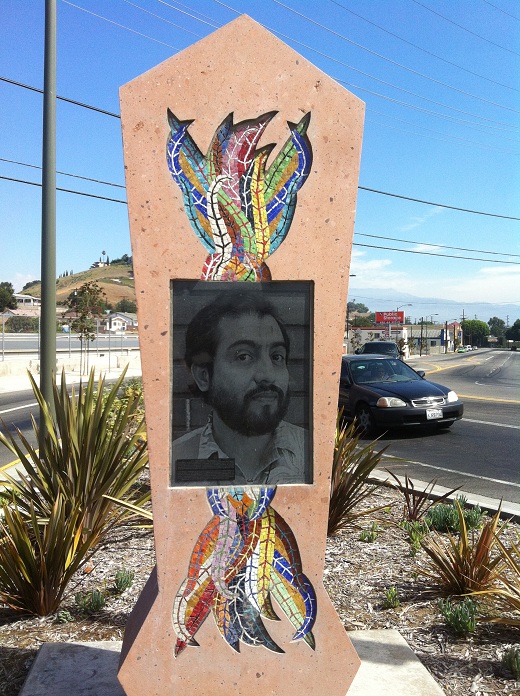
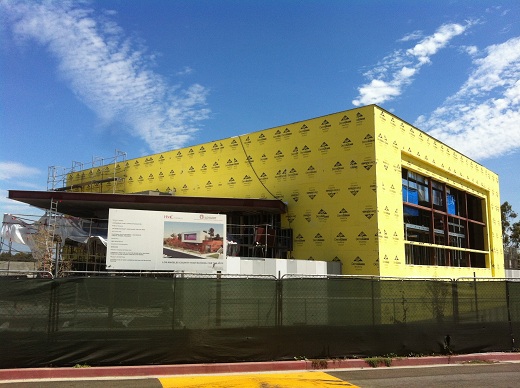



My stomping grounds !!! 😀
LikeLike
The Vex Made A Brief Comeback From 2012-2014 on Alhambra Ave.
LikeLike
Hi there. Is there a way for me to get a print of your El Sereno map?
LikeLike
Hello Thomas,
I just made prints of the El Sereno map available here:
https://www.saatchiart.com/art/Painting-El-Sereno/1182556/7338375/view
There’s also other El Sereno map merchandise (mugs, T-shirts, &c) available here:
https://www.teepublic.com/t-shirt/7322073-el-sereno?store_id=215029
Thanks for reaching out!
LikeLike